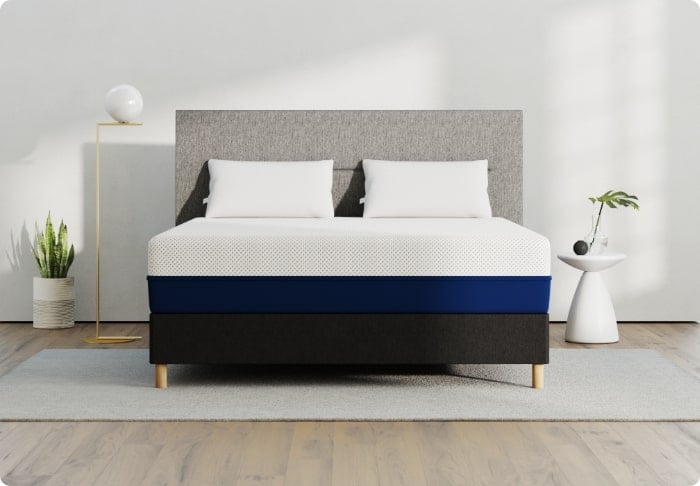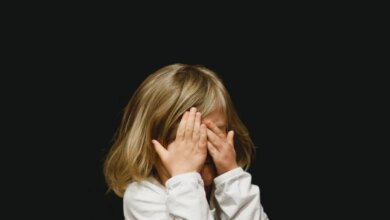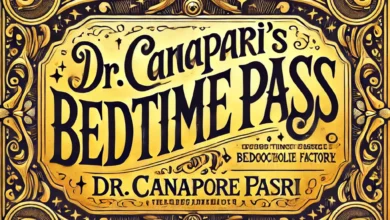Sleep Tourism and the Price for a Good Night’s Sleep

Forget action-packed itineraries and sightseeing marathons. In 2025, travelers are packing their bags for one reason: to rest.
Sleep tourism is gaining momentum, with people booking getaways designed to improve rest, recharge their minds, and experience restorative sleep in new places. From tranquil destinations to high-end hotel upgrades, here’s what’s driving the sleep travel trend this year.
Key Takeaways
- 1 in 5 travelers plan to take a sleep-focused trip this year.
- According to travelers, the top sleep tourism destinations of 2025 are Kyoto, Japan; Santorini, Greece; the Amalfi Coast, Italy; and the Maldives.
- Travelers are willing to pay an average of $1,725 for a restful getaway, with 43% saying they’d pay more for a “sleep-enhanced” hotel room.
- More than 1 in 10 (11%) have chosen a hotel specifically for its sleep-related features.
- Big Sur, California, is the top sleep tourism destination in the U.S.
- Residents of Hawaii, Alaska, and Vermont are the most interested in sleep tourism.
What Is Sleep Tourism?
Sleep tourism is a new travel trend where people take vacations specifically to get better sleep. Instead of packing their days with sightseeing and activities, these travelers focus on rest and relaxation.
They might book hotels that specialize in creating the perfect sleep environment, with blackout curtains, high-quality mattresses, and quiet rooms. Some resorts even offer sleep programs with experts who teach guests how to sleep better.
This type of vacation appeals to people who are exhausted from busy work schedules, stress, or poor sleep habits at home.
Many of us struggle to get good sleep because of noisy neighbors, uncomfortable beds, or the constant buzz of notifications on our phones before bed. Sleep tourists want to escape all of that and learn healthy sleep habits they can take back to their regular lives.
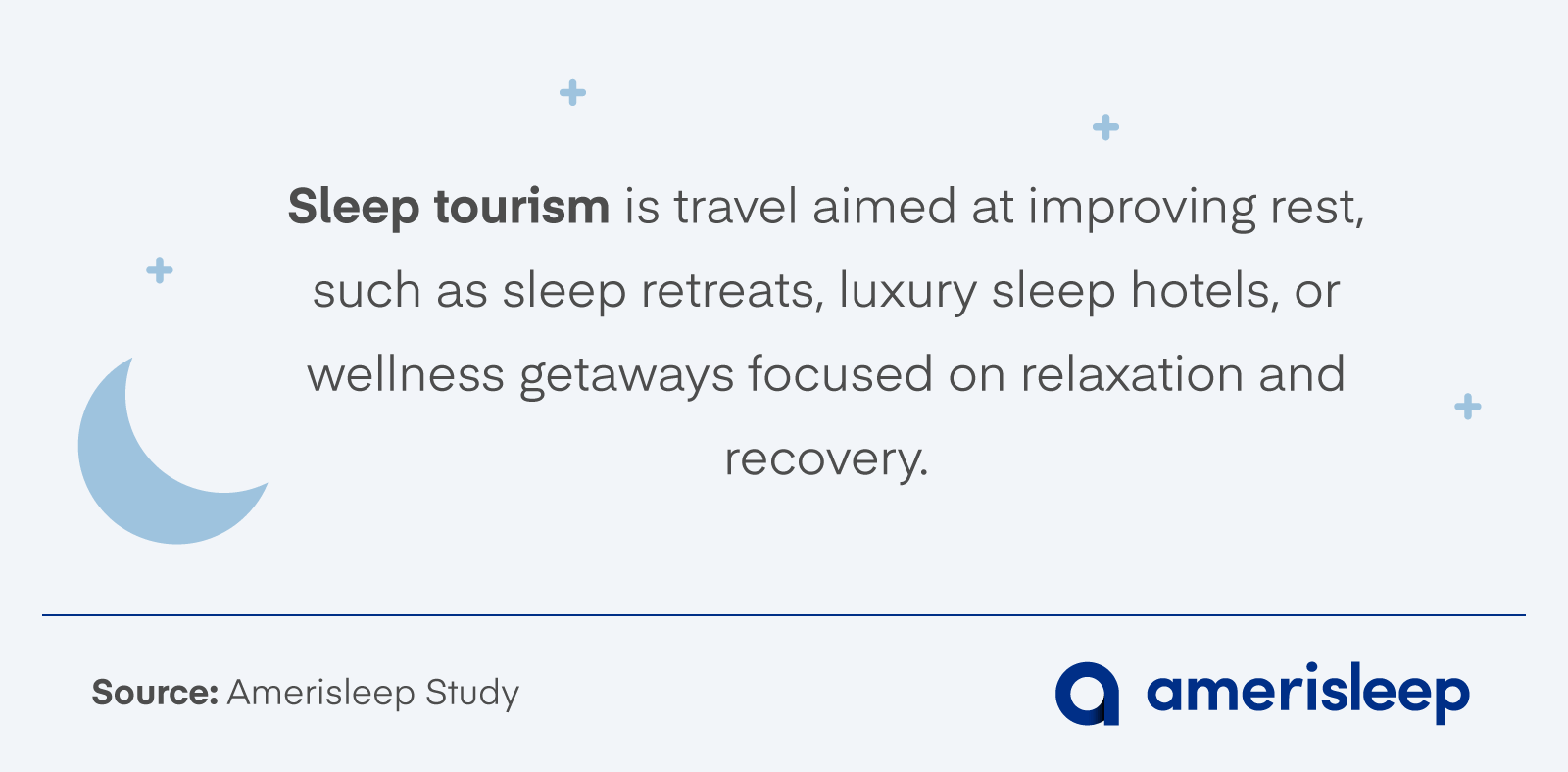

Sleep tourism destinations offer things like classes on improving relaxation, spa treatments, and special meals designed to promote better rest. Some places provide sleep coaches who work with guests one-on-one. Others have strict “digital detox” policies where phones and laptops aren’t allowed in certain areas.
The goal is to help people disconnect from their stressful daily routines and remember what it feels like to be truly rested. For many travelers, it’s not just a vacation. No, it’s a way to reset their relationship with sleep.
Top Destinations for Sleep Tourism in 2025
Overall, the most desired sleep tourism destinations of 2025 are Kyoto, Japan; Santorini, Greece; the Amalfi Coast, Italy; and the Maldives. Big Sur, California, is the top U.S. sleep tourism destination.
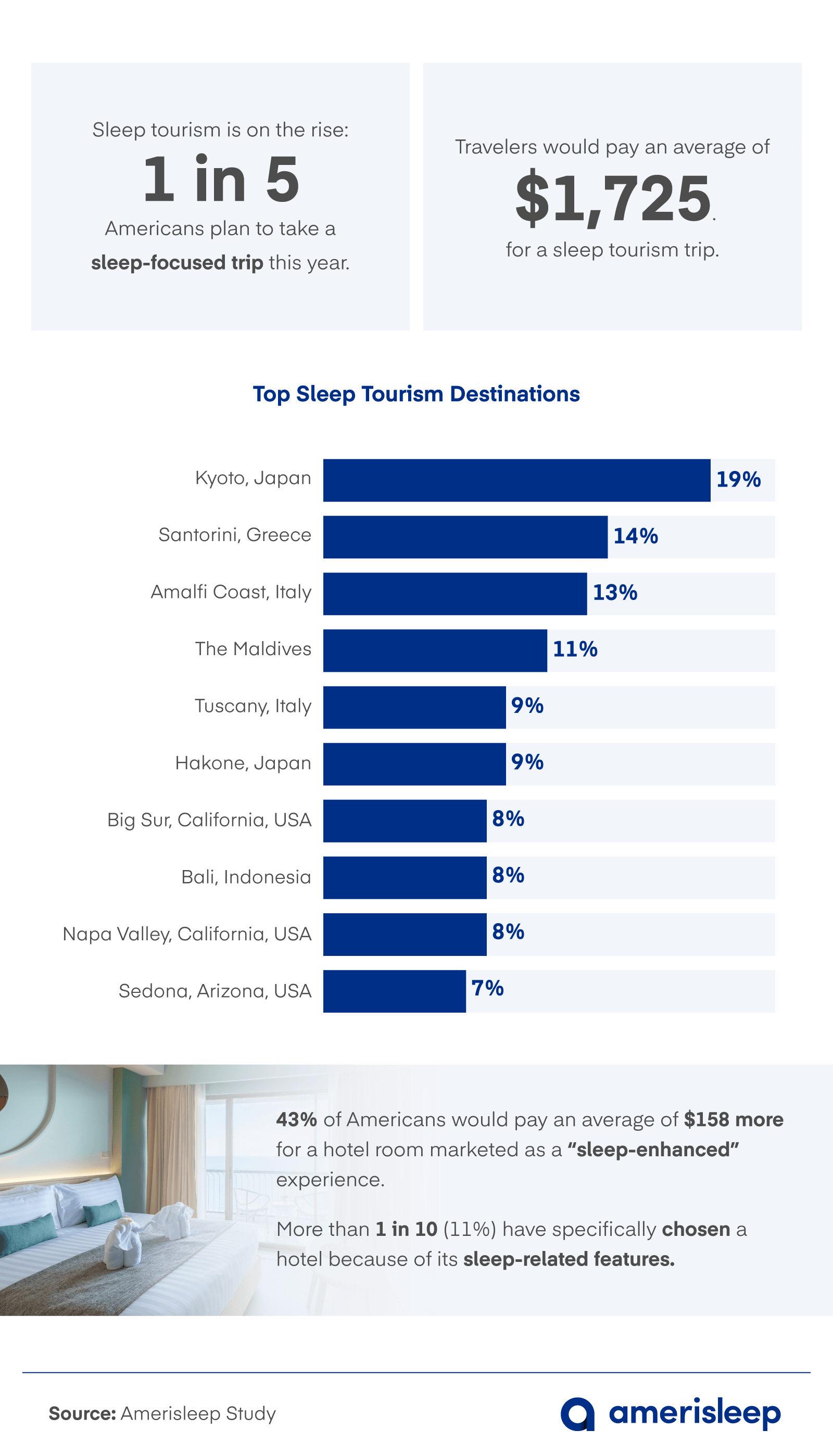

- 1 in 20 travelers have participated in sleep tourism, and 1 in 5 plan to do so this year.
- 20% of travelers would attend a sleep retreat/wellness program, and nearly 1 in 10 (8%) already have.
- Travelers are willing to pay an average of $1,725 for a sleep tourism vacation.
- 11% have chosen a hotel specifically for its sleep-related features.
- 43% would pay more for a hotel room marketed as a “sleep-enhanced experience.” Of those, 9% would pay $500 or more.
Cities & States Most Interested in Sleep Tourism
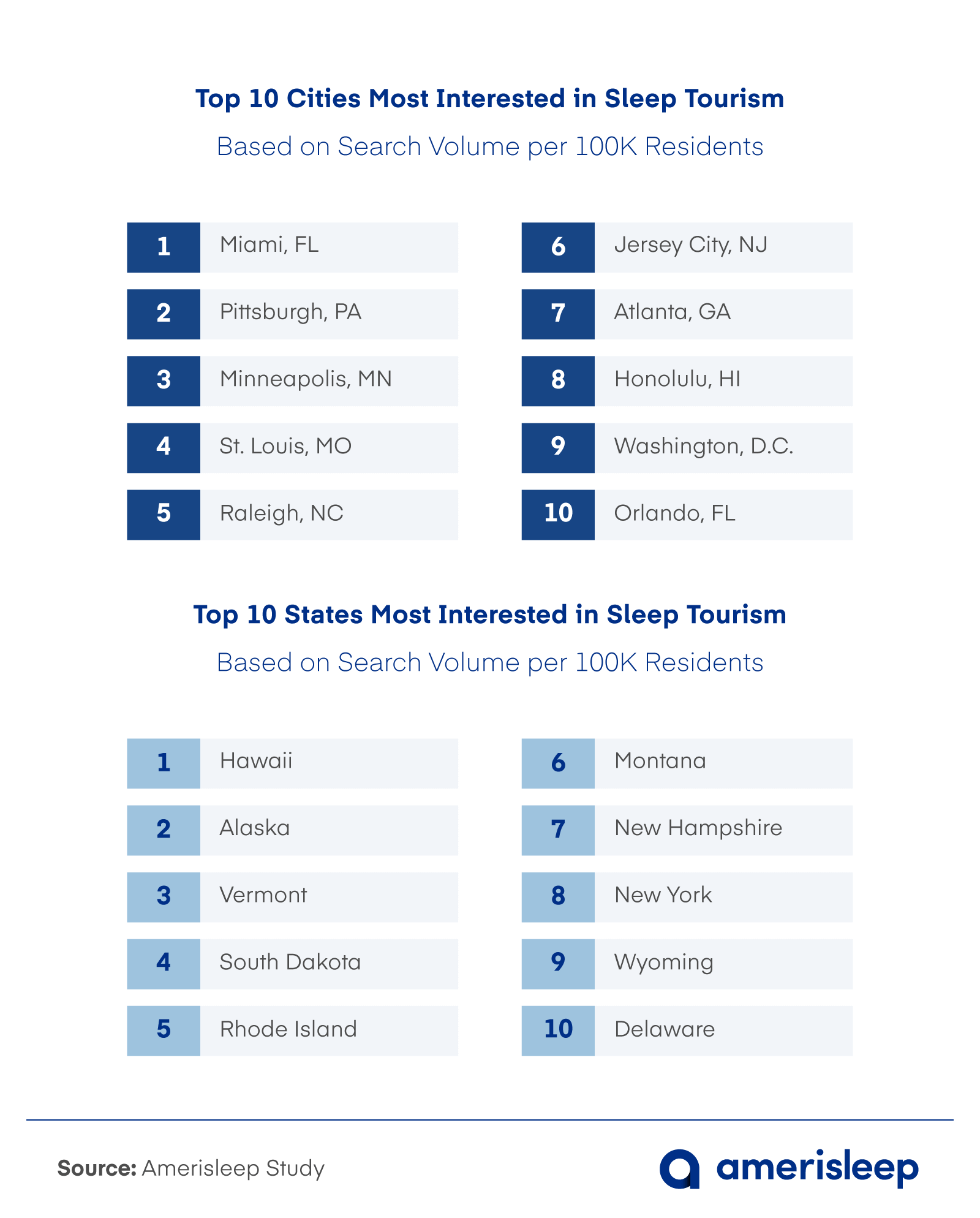

- Among the 100 most populated U.S. cities, Miami, Pittsburgh, and Minneapolis residents are the most interested in sleep tourism, based on search volume per 100K residents.
- Among the 50 states, residents of Hawaii, Alaska, Vermont, South Dakota, and Rhode Island are the most interested in sleep tourism.
What Sleep Amenities and Trends Are Travelers Paying Attention To?
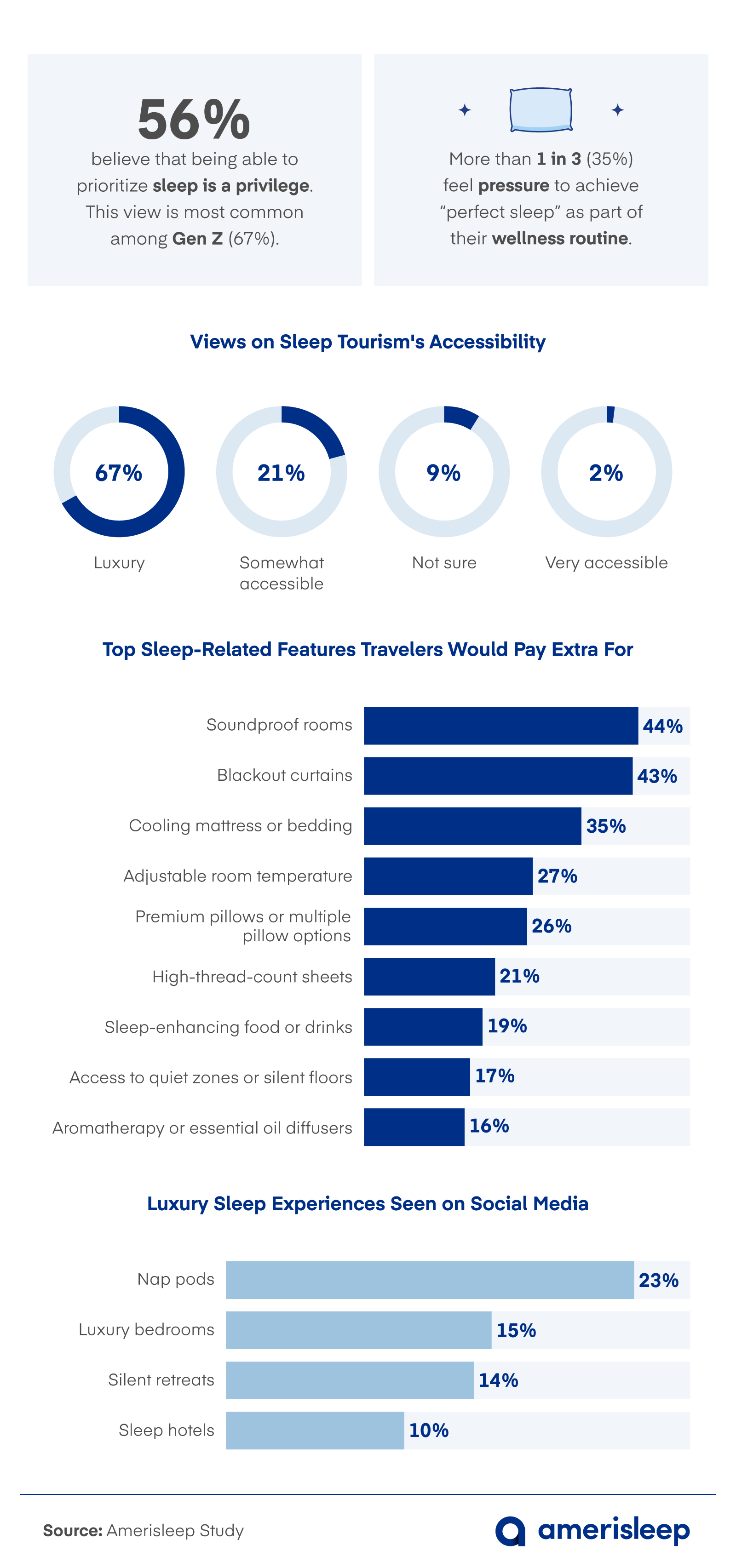

- Soundproof rooms (44%), blackout curtains (43%), and cooling mattresses (35%) are the most important sleep-related amenities that Americans would pay extra for.
- 56% say prioritizing sleep is a sign of privilege.
- 67% view sleep tourism as a luxury that few can afford.
- 41% of respondents have either posted on social media about a luxury sleep experience or seen others post about it. The most commonly mentioned experiences include nap pods (23%) and luxury bedrooms (15%).
- 35% feel pressure to achieve “perfect sleep.”
Sleep Trends People Are Trying or Curious About
- Sleep apps (30%)
- Silent retreats or digital detox getaways (25%)
- “Napflix” (sleep media) (24%)
FAQs
Can I take a staycation for better sleep?
Absolutely! You can create a sleep-focused staycation right in your own home or nearby area. Start by treating your bedroom like a luxury hotel suite. That means investing in blackout curtains, comfortable pillows, and keep the room cool and quiet.
Turn off all electronic devices at least an hour before bedtime, and consider booking a local spa day for massages or relaxation treatments. You might also try new sleep routines like evening stretches, herbal teas, or reading before bed instead of watching TV.
What is a sleep vacation?
A sleep vacation is a trip where the main goal is to improve your sleep quality and develop better rest habits. These vacations typically involve staying at hotels or resorts that specialize in creating perfect sleep environments with top-quality mattresses, soundproof rooms, and carefully controlled lighting.
Many sleep vacation destinations offer programs and classes led by sleep experts, spa treatments, and meals designed to promote better rest. The idea is to step away from your stressful daily routine and focus entirely on learning how to sleep well, so you can take those healthy habits back home with you.
How can I sleep better while traveling?
Traveling can disrupt your sleep, but there are several strategies to help you rest better on the road. Bring familiar items from home like your own pillow, a sleep mask, and earplugs to create a more comfortable environment in unfamiliar places.
Try to stick to your normal bedtime routine as much as possible, even if you’re in a different time zone, and avoid caffeine and heavy meals close to bedtime. If you’re dealing with jet lag, expose yourself to natural light during the day at your destination and consider taking melatonin supplements to help reset your internal clock.
Is it worth going on a sleep retreat?
Whether a sleep retreat is worth the high cost depends on how severely poor sleep is affecting your life and whether you’ve tried other solutions first. If you’ve struggled with chronic insomnia, high stress, or sleep disorders that impact your work and relationships, the investment might pay off through improved health and productivity.
However, many of the techniques taught at expensive retreats. Like creating a consistent bedtime routine, limiting screen time, and practicing relaxation methods. This can be learned for much less money through books, apps, or local classes.
Before spending over $1,000, consider trying these cheaper alternatives first, and remember that lasting change requires ongoing practice, not just a week-long retreat.
How can I develop good sleep habits that last beyond a vacation?
The key to making sleep habits stick is to start small and build them gradually into your daily routine at home. Pick just one or two techniques you learned during your sleep-focused vacation (like turning off devices an hour before bed or doing five minutes of deep breathing) and practice them consistently for several weeks before adding more changes.
Create a sleep-friendly environment in your bedroom by investing in blackout curtains, a comfortable mattress, or a white noise machine, just like the setup that worked well during your trip.
Write down your new sleep schedule and track how you feel each day, which helps reinforce the positive connection between good sleep habits and feeling better.
Why do some experts criticize about sleep tourism?
Some experts worry that sleep tourism can be a temporary fix that doesn’t address the root causes of people’s sleep problems, such as work stress, anxiety, or medical conditions that need professional treatment.
Critics argue that spending thousands of dollars on a luxury sleep retreat might give people false hope when what they really need is to see a doctor, change their work schedule, or make difficult lifestyle changes at home.
There’s also concern that the sleep tourism industry sometimes makes exaggerated promises about quick fixes, when developing good sleep habits actually requires months of consistent practice and patience.
Many sleep specialists believe that people would get better long-term results by working with local healthcare providers and making gradual changes to their daily routines rather than expecting a vacation to solve complex sleep issues.
Conclusion
Sleep tourism represents more than just a passing travel trend. It’s a response to our increasingly sleep-deprived society. With one in five travelers planning a sleep-focused trip this year and people willing to spend nearly $1,800 on restful getaways, it’s clear that quality sleep has become a luxury many are eager to invest in.
The popularity of destinations like Kyoto, Santorini, and Big Sur shows that travelers are seeking environments specifically designed to help them disconnect from daily stressors and rediscover what truly restorative sleep feels like.
However, the real value of sleep tourism lies not in the vacation itself, but in what travelers bring home with them. While critics rightfully point out that expensive retreats aren’t magic solutions for deep-rooted sleep problems, the trend does highlight an important shift in how we prioritize rest and self-care.
The key is approaching sleep tourism as an educational experience rather than a quick fix. Try learning techniques and habits that can be maintained long after returning home.
Whether you choose an expensive sleep retreat or create your own restful staycation, the most important takeaway is that good sleep requires ongoing commitment and practice.
Sleep tourism may have introduced many people to the idea that rest is worth investing in, but lasting change happens through consistent daily choices, not just a week away from home.
In a world where 35% of people feel pressure to achieve “perfect sleep,” perhaps the greatest lesson from this trend is simply learning to value rest as an essential part of a healthy, balanced life.
Methodology
We surveyed 1,000 Americans on June 13, 2025, to explore their perceptions and experiences with sleep tourism. We also used Google Trends search volume data from 2024 and 2025 for the 100 most populated U.S. cities and states. Search volume data was obtained on June 12, 2025.
About Amerisleep
Amerisleep creates innovative sleep solutions that help people rest better, whether at home or while traveling. From eco-friendly mattresses to supportive pillows and sleep accessories, Amerisleep makes it easier to bring comfort and quality rest into every space.
Fair Use Statement
Feel free to share this data for noncommercial use, but please include a link back to Amerisleep for proper attribution.
